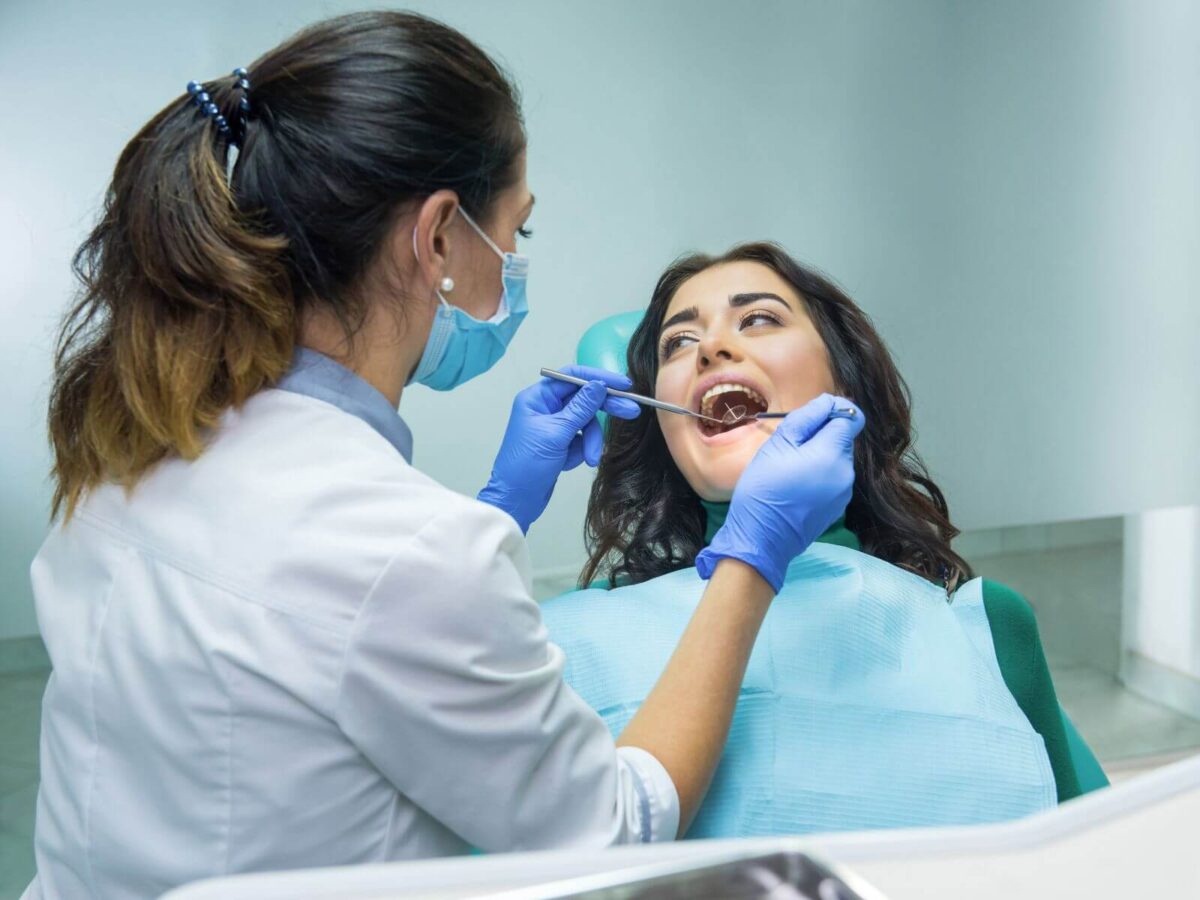Blog
Dental hygiene tips for healthy teeth & gums

A Step-By-Step Guide For Handling Dental Emergencies
A dental emergency is when an individual has a severe dental condition that requires attention. This condition may present as unbearable pain within the mouth, unexplained inflammation around the mouth, or any other diseased body part.
There are those times when you cannot get to your dentist in Texas to seek urgent medical attention. But you need not worry. In the meantime, until you can make your way to the dentist’s office, here are some things they recommend you do. Information on handling a dental emergency is given on the Springtown Family Dentist website.
What are Dental Emergencies?
Dental emergencies are unpredictable and may arise at any time. A child requires immediate attention for any condition that causes severe pain, bleeding, or even loss of a tooth. If you know what a dental emergency is and how to address it, oral matters will be checked as we see next. So, let’s discuss the peculiarities of dental emergencies.
What is Considered As an Emergency Dentistry?
A dental emergency is an event that results in even a sharp twinge of discomfort or a great deal of blood loss or where a patient could end up without a tooth. This could be an accident, a broken tooth, or an infection, such as a dental abscess. This should be done quickly to avoid experiencing even more such issues.
How to Handle Dental Emergencies
Let’s take a look at a step-by-step guide to comprehend what can be done during dental emergencies.
Step 1: Assess the Situation
Start with evaluating the degree of the problem. That is, identify if the disease is highly fatal or toll-like and can be treated for some time. It can be accessed by signs like acute pain, passing of a lot of blood, or breathing problems. It can assist in determining the right action to take, sometimes between going for professional attention at a dental facility and waiting for some time.
The Journal of the American Dental Association (JADA) points out that it may decrease emergency department utilization by a quarter.
Step 2: Immediate Self-Care
This depends on each type of dental emergency individually. Below is a list of immediate care that will help. First, avoid drinking too much coffee.
Severe Tooth Ache: Washing the mouth with warm water might also be helpful. After this, dental floss clears any food particles stuck between the teeth. According to the study, it reduces pain by about seventy percent. Such an impact arises from tissue debris prompting and soothing provided on the region.
Another thing that might help is applying a cold pack to the checks outside or in the affected area. It will decrease inflammation.
Knocked-Out Teeth: There is no time to lose, so it is essential to take immediate action. Begin with a gentle rinse. Ensure the crown is maintained, and the roots are not tampered with.
If the tooth was knocked out, you may try to put it back in with the help of a dentist. If this does not work, consider milk as a preservative. A study in Dental Traumatology states that when new re-inserting is done within thirty minutes, chances for re-attachment soar by 85%.
Broken or Chipped Tooth: Data also reveal that complicated effects can be minimized and prognosis optimized by rinsing the mouth with warm water and applying a cold compress on the external aspect of the mouth due to the broken tooth in 80% of the cases. However, it is recommended that professional dental care is sought for proper healing.
Abscess: However, as the first intervention, try using a mouthwash with a mild salt water solution a few times a day. This may help clear some of the infection.
According to the Journal of Clinical Periodontology, it can also help control pain and decrease bacterial load within the area. The journal also mentions that 75% of the patients have had some relief from it, although only temporarily.
Soft Tissue Injury: If you have such a dental emergency, the initial step that you should take is to rinse the area with warm water. After this, one may use a clean cloth to apply gentle pressure to address bleeding; swelling is usually reduced using a cold compress.
Using this method, the pain is alleviated in 85% of soft tissue injury cases. However, if this self-care does not work and the pain is unabating after 15 minutes, then it is ideal to visit the emergency dentist.
Partially Dislodged Tooth: The affected person should apply a cold compress outside the mouth to make it swollen or relieve pain. It would be advisable not to use any pressure on the tooth. Other drugs that may assist include over-the-counter pain relief medication. This should be followed instantly with professional assistance.
Research, such as Dental Traumatology, shows that the intervention carries the dislodged tooth in sixty to seventy-five percent of such incidences.
Missing crown or filling: If dental cement is available, consider applying it to seal the exposed tooth. Check to determine if the dental crown is still in place in the event of a loss. In that instance, dental cement can be used to fix it. These are stopgap methods until you receive a permanent solution from a dental center.
Orthodontic Braces Broken: One workable way to deal with a broken brace is to nudge the wires into a comfortable position. Think about using a pencil’s rubber end for this purpose. Another way to hide sharp ends is with orthodontic wax. Cutting wire should also be done carefully because it could be ingested.
Like the last instance, these are only short-term fixes requiring an orthodontist’s corrective attention.
Step 3: Make a Dental Emergency Services Contact
If the assessment focuses on severity, the second phase should happen immediately. If not, a third priority will suffice.
Now, seek prompt guidance and treatment from the dentist or an emergency dental facility. According to the American Dental Association (ADA), scheduling these dental services promptly lowers the chance of problems by around 75%. This is practically available as most dentist practices provide emergency phones.
Step 4: Pay Attention to Expert Advice
Upon first contact, the dentist may suggest following up with home care instructions, making an emergency appointment, or going to the hospital. Heed these suggestions to guarantee the most outstanding results.
Step 5: Make Plans for Continued Care
In most circumstances, immediate treatment might not be enough. It may be essential to schedule a follow-up appointment at a dental center to track healing and avoid issues. During these appointments, the dentist can perform accurate examinations and, if necessary, provide further care. This way, a full recovery can be guaranteed in a dental emergency.
Conclusion
You should already have a well-defined plan for dealing with dental emergencies. It’s time to locate the top dental facility that offers assistance during emergencies like these. Please contact Springtown Family Dentist to schedule an appointment if you are unsure whether you need dental emergency care.


